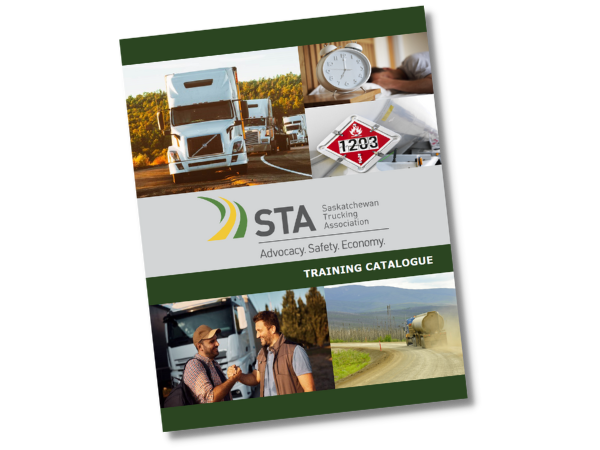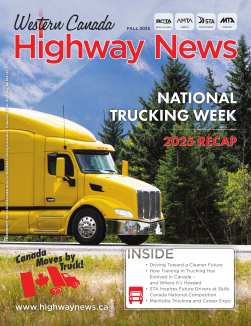
Internal Trade Ministers to Pilot Mechanisms to Eliminate Trade Barriers in Trucking
September 26, 2024
Canada is a leading trading nation that faces many internal jurisdictional regulatory and administrative barriers that limit our nation’s opportunities for growth.

The Committee for Internal Trade Ministers, which met today in Charlottetown, recognizes the importance of domestic trade and the role trucking plays in the economy. It will begin working with the trucking industry on a series of pilot projects aimed at expediting the elimination of trade barriers and setting the country up for future success. This is the first step that will eventually see an expansion to other parts of the trucking industry and additional sectors of the economy.
“This is welcome news for the trucking industry and a positive step for economic development in the provinces and the territories,” said Canadian Trucking Alliance president Stephen Laskowski. “Canada moves by truck, and bringing all levels of government together to identify and eliminate trade barriers is an important step in improving the movement of trucking equipment, drivers and their goods. This is the beginning of the process and refining the mechanisms will lead to more opportunities for our national and provincial economies to become more efficient and competitive.”
The goal of the project is to create a template to eliminate the most acute trade barriers impacting trucking, many of which were identified by a 2023 CTA report. Once this process is proven successful and refined with input from industry, provincial and territorial governments, additional issues in the trucking sector and other aspects of the economy will be addressed.
The topics identified by the CTA addressed in the pilot include:
Long Combination Vehicle (LCV) Harmonization in Western Canada
Industry and government have identified inconsistencies and opportunities for improvement related to training, administration, and oversight of LCVs in Western Canada. These include: the need to update training materials, refine quality control measures, improvements tracking, communication, administration of training records, and further process alignment among the western provinces.
“Long combination vehicles play an integral role in commercial goods movement across western Canada,” said Aaron Dolyniuk, executive director, Manitoba Trucking Association. “They are a fuel-efficient means of moving freight across long distances; however, a lack of harmonization has impeded their implementation. Ensuring professional drivers and carriers meet the same standards to operate this vehicle combination will contribute to a safer and more efficient environment for their operation.”
Over Dimensional Loads
The way in which jurisdictions regulate trucks that move oversize loads across Canada can vary significantly. The different requirements create unnecessary red tape and operational challenges for those trucking companies. For example, it is common for an over dimensional load to travel through three jurisdictions in one day. The differing requirements negatively impact productivity and efficiency. Common technical items that vary among jurisdictions are:
- What marking (flagging/lighting/signage) is required on the vehicle and cargo, and when are they to be used;
- The definition of daytime and nighttime and its impact on when over dimensional loads can travel, or when the requirements for those loads change. For instance, some jurisdictions allow the load to move half an hour before sunrise and half an hour after sunset, where others allow half an hour after sunrise and half an hour before sunset.
- When an escort vehicle (known as a pilot car) is required to accompany a truck transporting oversize loads, the requirements for those vehicles can differ. Some jurisdictions require certification and training for the escort vehicle operators, which industry views as positive, and other jurisdictions do not.
- Differing permit systems and a lack of coordination between jurisdictions on permits issuance and application processes can create a domino effect when unplanned delays take place in one jurisdiction, which is common.
“Over dimensional freight moved by truck is often an integral component of a major project in Canada. The importance of this freight cannot be overstated, and we welcome changes that positively impact productivity and efficiency,” said Dolyniuk. “Harmonization in this area makes sense for the trucking industry, and all industries requiring this type of freight, including manufacturing, mining, construction, and agriculture.”
Other trucking issues flagged for the pilot include:
- Enhancing mechanisms to further streamline the processes for Commercial Driver Medical requirements, which the jurisdictions follow under National Safety Code Standard 6;
- Addressing further harmonization on trip inspections information under National Safety Code Standard 13 to reduce administrative burden for carriers that operate across multiple jurisdictions.
“CTA looks forward to contributing to the pilot process developed by the ministers for both of these items and we will continue to work with members of the Alliance and the Canadian Council of Motor Transport Administrators as the process moves forward,” said Laskowski.
STA Training
We have a downloadable Training Catalogue!
Don't wait - sign up for one of our courses today and take the first step towards becoming a safer, more knowledgeable driver!




